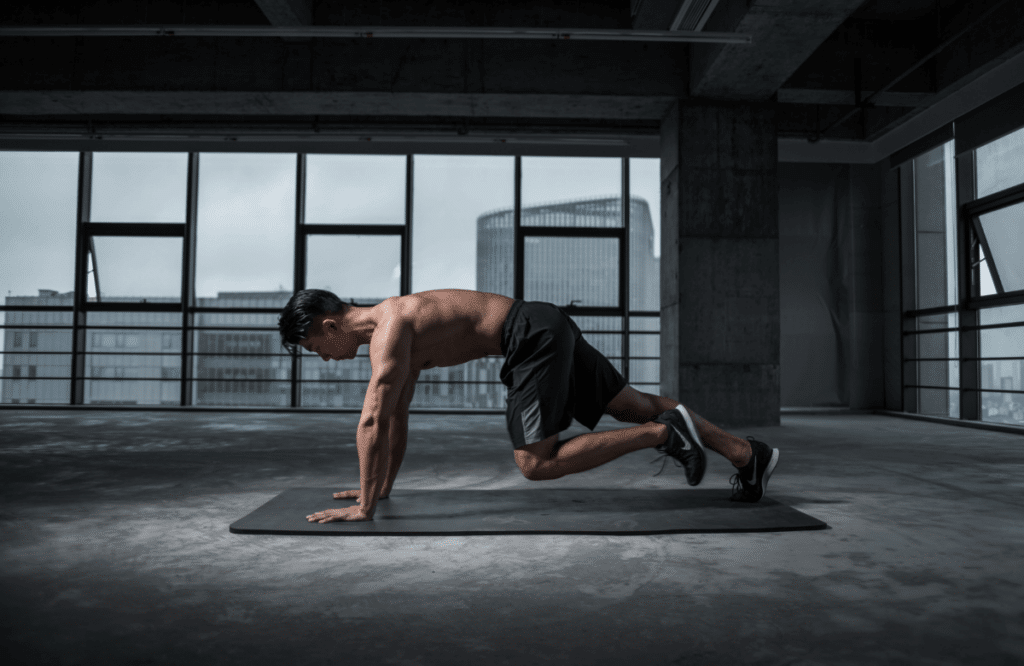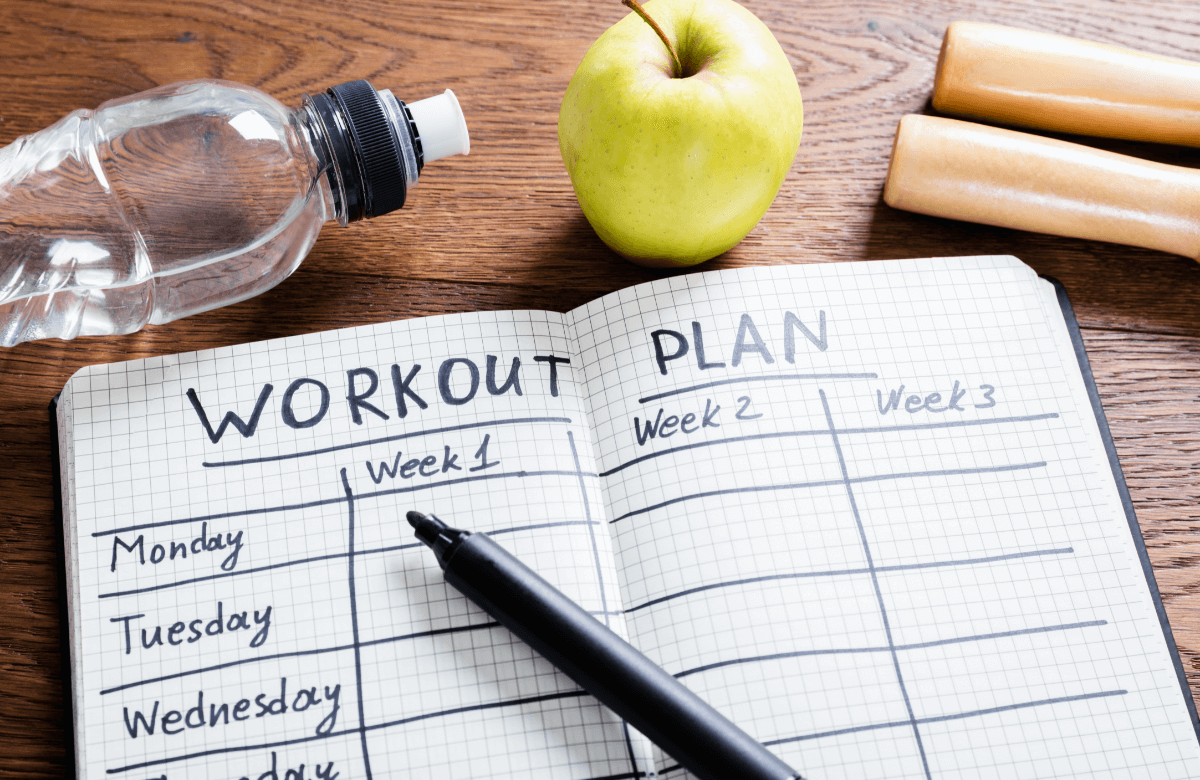When it comes to achieving your fitness goals, having a structured workout plan is key. One popular approach to organizing your workouts is the Upper/Lower Split. In this article, we will delve into what workout splits are, explain the Upper/Lower Split in detail, provide sample routines for beginners, intermediates, and advanced trainees, explore the benefits and downsides of this training method, and discuss how both athletes and non-athletes can incorporate it into their fitness regimens.
Jump to:
- What Are Workout Splits?
- What is an Upper/Lower Split?
- Upper/Lower Split Workout Routine:
- What are the Benefits of An Upper Lower Split Workout?
- Downsides of the Upper/Lower Body Split
- How Many Days Per Week Is Best For An Upper/Lower Split?
- Why Would Nonathletes Want A Rigorous Upper/Lower Split Workout Plan?
- How Do Professional Athletes Approach Upper/Lower Split Workouts?
- Frequently Asked Questions (FAQ)
- Is the Upper/Lower Split suitable for weight loss?
- Can beginners use the Upper/Lower Split?
- How do I prevent overuse injuries in an Upper/Lower Split routine?
- What if I have limited time for workouts? Can I still use the Upper/Lower Split?
- Can I combine cardio with the Upper/Lower Split?
- How long should I stick with the Upper/Lower Split before changing my routine?
What Are Workout Splits?
Workout splits refer to the division of your training routine into distinct sessions targeting different muscle groups or movement patterns on different days. This organization allows for focused and efficient training, preventing overuse of specific muscle groups and promoting balanced development.
What is an Upper/Lower Split?
The Upper/Lower Split, as the name suggests, divides your training into upper-body and lower-body workouts. Typically, upper body workouts focus on muscles above the waist, including the chest, back, shoulders, and arms, while lower body workouts target muscles below the waist, including the legs and core.
Upper/Lower Split Workout Routine:
This Upper/Lower Split Workout Routine is designed to help individuals of all fitness levels progressively build strength and muscle mass. The routine is divided into three levels: Beginner, Intermediate, and Advanced, each with specific exercises and rep ranges tailored to the individual’s fitness level. Let’s delve into the details of each level and what the exercises aim to achieve.
Beginner Level:
Day 1 (Upper Body):
- Bench Press (3 sets of 8-10 reps): This classic compound exercise primarily targets the chest muscles (pectoralis major) and also engages the triceps and shoulders.
- Lat pulldowns (3 sets of 8-10 reps): Lat pulldowns work the upper back muscles, particularly the latissimus dorsi, helping to create a wider and more defined back.
- Dumbbell Shoulder Press (3 sets of 8-10 reps): This exercise targets the deltoid muscles, helping to build strong and well-rounded shoulders.
- Bicep Curls (2 sets of 10-12 reps): Bicep curls isolate the biceps, contributing to arm strength and aesthetics.
- Tricep Dips (2 sets of 10-12 reps): Tricep dips target the triceps, assisting in achieving defined arm muscles.
Day 2 (Lower Body):
- Squats (3 sets of 8-10 reps): Squats are excellent for building lower body strength, primarily working the quadriceps, hamstrings, and glutes.
- Leg Press (3 sets of 8-10 reps): Leg presses continue to engage the lower body muscles, particularly the quadriceps and glutes.
- Lunges (3 sets of 10-12 reps per leg): Lunges are excellent for targeting each leg individually, helping to improve balance and symmetry.
- Planks (3 sets of 30-45 seconds): Planks are a core-strengthening exercise, enhancing stability and preventing lower back issues.
Intermediate Level:
Day 1 (Upper Body):
- Incline Bench Press (4 sets of 6-8 reps): The incline bench press emphasizes the upper chest, providing a well-rounded chest development.
- Pull-Ups (4 sets of 6-8 reps): Pull-ups are a challenging exercise that works the back, biceps, and overall upper body strength.
- Seated Military Press (4 sets of 6-8 reps): Seated military presses continue to develop shoulder strength and size.
- Hammer Curls (3 sets of 8-10 reps): Hammer curls target the biceps from a different angle, promoting balanced arm development.
- Skull Crushers (3 sets of 8-10 reps): Skull crushers target the triceps, contributing to arm definition and strength.
Day 2 (Lower Body):
- Deadlifts (4 sets of 6-8 reps): Deadlifts are a powerhouse exercise that work the entire posterior chain, including the lower back, glutes, hamstrings, and traps.
- Leg Extensions (4 sets of 8-10 reps): Leg extensions isolate the quadriceps, helping to shape and strengthen the front of the thighs.
- Bulgarian Split Squats (3 sets of 8-10 reps per leg): These single-leg squats improve balance and target each leg individually, promoting symmetry.
- Russian Twists (3 sets of 12-15 reps per side): Russian twists are an effective core exercise that enhances oblique strength and definition.
Advanced Level:
Day 1 (Upper Body):
- Bench Press (5 sets of 4-6 reps): Heavy bench presses promote maximum chest and tricep strength.
- Pull-Ups (Weighted) (5 sets of 4-6 reps): Weighted pull-ups add intensity to back and bicep training.
- Push Press (5 sets of 4-6 reps): Push presses develop shoulder strength and power.
- Barbell Curls (4 sets of 6-8 reps): Barbell curls further challenge the biceps for advanced arm development.
- Close-Grip Bench Press (4 sets of 6-8 reps): Close-grip bench presses emphasize the triceps, contributing to arm size and definition.
Day 2 (Lower Body):
- Squats (Heavy) (5 sets of 4-6 reps): Heavy squats promote maximum lower body strength and muscle growth.
- Romanian Deadlifts (5 sets of 6-8 reps): Romanian deadlifts target the hamstrings and lower back, enhancing strength and stability.
- Pistol Squats (4 sets of 6-8 reps per leg): Pistol squats are a demanding single-leg exercise, improving leg strength and balance.
- Hanging Leg Raises (4 sets of 10-12 reps): Hanging leg raises challenge the core muscles, providing abdominal strength and definition.

What are the Benefits of An Upper Lower Split Workout?
- Weight Loss: The intensity and variety in an Upper/Lower Split can help burn calories effectively, aiding in weight loss. Moreover, the elevated metabolism from resistance training continues even after the workout ends, further promoting fat loss.
- Flexibility: This split allows you to tailor your workouts to your specific goals, whether it’s strength, hypertrophy, or endurance. You can easily adjust exercise selection and rep ranges to match your objectives.
- Muscle Growth: By focusing on specific muscle groups, you can stimulate more muscle fibers, promoting lean muscle growth. Over time, this can lead to a well-defined physique.
- Improved Strength and Endurance: Targeted training for each muscle group can lead to significant strength and endurance gains. Upper/Lower Splits are especially effective for individuals aiming to boost their functional strength.
- Intensity: With focused workouts, you can push yourself harder, leading to greater gains in a shorter time. The Upper/Lower Split encourages progressive overload, a fundamental principle of muscle and strength development.
- Recovery: Separating upper and lower body workouts allows adequate recovery time for each muscle group, reducing the risk of overtraining and enhancing overall recovery. This is crucial for injury prevention and sustainable progress.
Downsides of the Upper/Lower Body Split
Risk of Injury: Intense training, especially for advanced athletes, can increase the risk of overuse injuries if not managed properly. It’s vital to incorporate rest days and proper form to mitigate this risk.
Not Suitable for Everyone: Beginners may find the Upper/Lower Split challenging, and those with specific fitness goals (e.g., powerlifting or bodybuilding) may prefer other training splits tailored to their objectives. Additionally, individuals with certain medical conditions or limitations should consult a fitness professional before adopting this split.
How Many Days Per Week Is Best For An Upper/Lower Split?
The ideal training frequency depends on your goals and recovery capacity. Many individuals opt for a 4-day split (2 upper body and 2 lower body workouts per week), but you can adjust this based on your fitness level and schedule. For advanced athletes or those with high recovery capacity, a 5 or 6-day split with more specialized training sessions may be appropriate.
Why Would Nonathletes Want A Rigorous Upper/Lower Split Workout Plan?
Even if you’re not a competitive athlete, the Upper/Lower Split can benefit you in several ways. It offers structure and organization to your workouts, making it easier to stay consistent and track progress. Additionally, the efficient nature of this split allows you to make the most of your training time, making it a suitable choice for anyone committed to their fitness journey.

How Do Professional Athletes Approach Upper/Lower Split Workouts?
Professional athletes often take a customized approach to their Upper/Lower Split routines, tailoring them to their specific sport and performance goals. In addition to traditional strength training, they may incorporate sport-specific drills, plyometrics, agility exercises, and conditioning work. These elements are essential for enhancing their athletic performance and addressing the unique demands of their sports.
In conclusion, the Upper/Lower Split is a versatile and effective training method suitable for individuals of various fitness levels and goals. It offers numerous benefits, including improved muscle growth, strength, and flexibility, but it should be approached with caution to mitigate the risk of injury. Whether you’re an athlete or a fitness enthusiast, incorporating this split into your workout routine can lead to substantial progress toward your fitness goals. Remember to consult a fitness professional if you have any doubts or specific requirements to ensure your training plan is safe and effective.
Frequently Asked Questions (FAQ)
Is the Upper/Lower Split suitable for weight loss?
Yes, the Upper/Lower Split can be an effective approach for weight loss. It combines resistance training and cardiovascular benefits, helping burn calories and build lean muscle mass. Remember to maintain a calorie deficit through proper nutrition for optimal weight loss results.
Can beginners use the Upper/Lower Split?
Yes, beginners can use the Upper/Lower Split, but it’s advisable to start with the beginner routine mentioned in this article. Focus on proper form and gradually increase the intensity as you become more comfortable with the lower and upper body workouts.
How do I prevent overuse injuries in an Upper/Lower Split routine?
To prevent overuse injuries, ensure that you incorporate rest days into your routine. Listen to your body and allow sufficient time for recovery. Additionally, use proper form during exercises, and consider consulting a fitness professional for guidance.
What if I have limited time for workouts? Can I still use the Upper/Lower Split?
Yes, you can still use the Upper/Lower Split if you have limited time. Simply modify your workouts to fit your schedule by reducing the number of exercises or sets while maintaining intensity. Shorter, focused workouts can still provide significant benefits.
Can I combine cardio with the Upper/Lower Split?
Yes, you can combine cardio workouts with the Upper/Lower Split to enhance cardiovascular fitness. For example, you can incorporate cardio sessions on your rest days or after your weightlifting workouts. This combination can support overall health and weight management.
How long should I stick with the Upper/Lower Split before changing my routine?
The duration you should stick with the Upper/Lower Split before changing your routine depends on your goals and progress. Typically, it’s beneficial to follow a program for 8-12 weeks before making significant changes. However, you can regularly introduce variations and progression in exercises to keep your workouts challenging and avoid plateaus.













